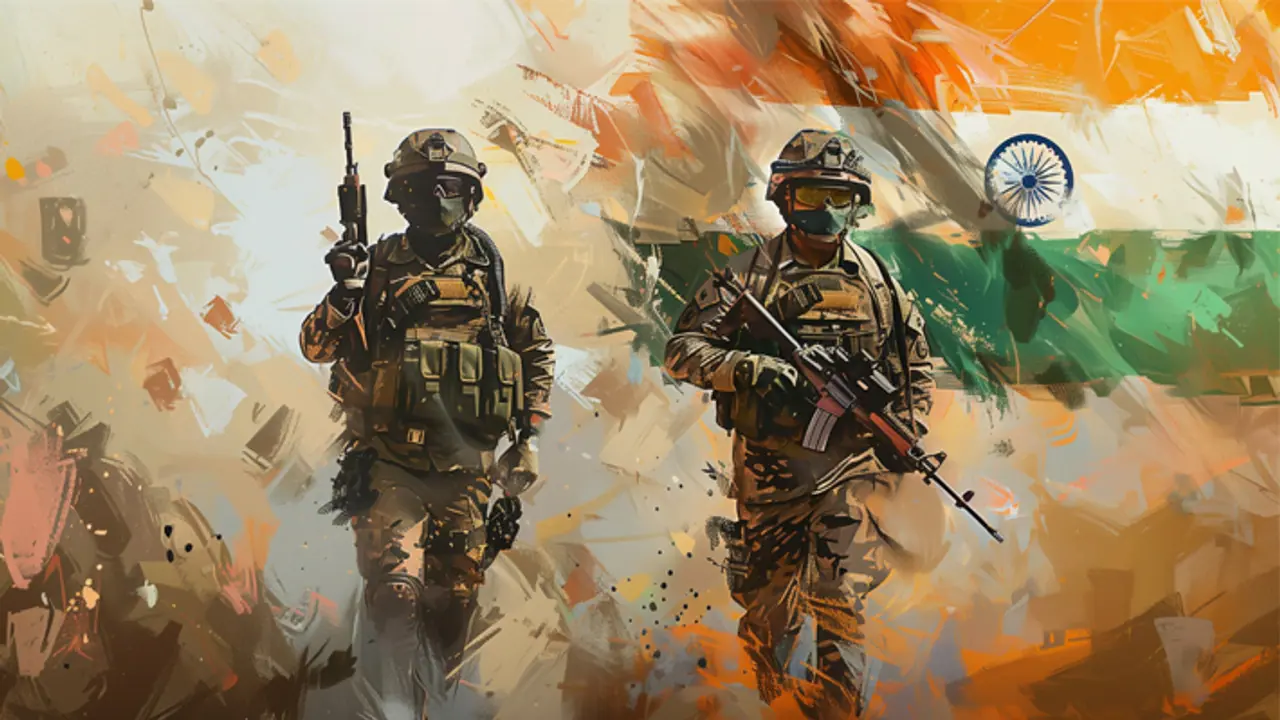We’ve seen these kinds of crises before. India and Pakistan have fought full-scale wars many times over the years, in 1947, 1965, 1971 and 1999.
The Indian armed forces early Wednesday launched precision missile strikes on nine terror targets across Pakistan and Pakistan-occupied Kashmir (PoK), including Bahawalpur, a known stronghold of the Jaish-e-Mohammad outfit. The decisive military response comes in the wake of the deadly terror attack in Jammu and Kashmir's Pahalgam that claimed 26 lives on April 22.

The Defence Ministry confirmed the strikes were part of ‘Operation Sindoor’, describing them as "focused, measured and non-escalatory in nature." The operation targeted terror infrastructure involved in planning attacks against India.
The operation was carefully calibrated—focused, non-escalatory, and designed to avoid Pakistani military installations. India, in an official statement, said it has exercised restraint in both the selection of targets and the method of execution. The strikes hit a total of nine locations believed to be involved in orchestrating attacks against India.
The operation involved a coordinated, multi-domain assault—both land and sea-borne—executed jointly by the Indian Army, Navy, and Air Force. All forces were actively engaged, and notably, no Indian jet was lost during the strikes, sources told India Today.
Codenamed 'Operation Sindoor', the mission aimed to eliminate top terror leaders from Jaish-e-Mohammed in Bahawalpur and Lashkar-e-Taiba in Muridke, as per sources.
Nine locations were identified and targetted. All strikes on terror camps were successful.
Who is better equipped to win a war: India or Pak?
We’ve seen these kinds of crises before. India and Pakistan have fought full-scale wars many times over the years, in 1947, 1965, 1971 and 1999.
There were also cross-border strikes between the two sides in 2016 and 2019 that did not lead to a larger war.
These conflicts were limited because there was an understanding, given both sides possess nuclear weapons, that escalating to a full-scale war would be very dangerous. That imposed some control on both sides, or at least some caution.
There was also external pressure from the United States and others on both occasions not to allow those conflicts to spiral out of control.
While diplomacy continues to avert catastrophe, should tensions boil over into warfare, India holds overwhelming superiority in almost every strategic domain—from economic stability and military strength to diplomatic leverage and nuclear deterrence.
Military Muscle: A Glaring Disparity
India’s land warfare capabilities feature about 4,201 main battle tanks (MBTs), notably the T-90 Bhishma. Pakistan fields around 2,627 tanks, predominantly the Chinese-origin VT-4 Haider variants.
Artillery remains crucial in India's ground force modernization. India has deployed advanced howitzers, including indigenous platforms and modernised artillery systems.
These systems are – K-9 Vajra, a self-propelled howitzer, the M777 Ultra-Light Howitzers, Pinaka rockets with extended range of 72-km.
Pakistan recently inducted Chinese-made SH-15 155mm self-propelled howitzers, boosting its artillery mobility.
Economic Endurance: A War Chest Built to Last
India’s robust economy supports an expansive defence budget, significantly surpassing Pakistan's more limited resources. This severely constrains Pakistan's capacity for comparable military modernisation, thus widening the capability gap.
India’s comprehensive military advantage across naval, aerial, terrestrial, and strategic domains creates a decisive regional imbalance.
Pakistan faces substantial strategic limitations with limited resources and heavy dependence on external partnerships, particularly with China.
Consequently, this imbalance necessitates that Pakistan emphasise diplomatic engagement and careful management of tensions, navigating cautiously within a rapidly evolving and militarily skewed regional landscape.
Diplomatic Realignment: Friends in High Places
India’s growing economic and political influence has dramatically reshaped its international alliances. Historically, Pakistan enjoyed US and Chinese backing during past conflicts (1965, 1971, and 1999). But the tides have turned.
“Pakistan has historically had US and China support them in all three wars fought in 1965, 1971 and 1999. But with the dynamics of US-Pak relations changing drastically after the killing of OBL, clubbed with India strategic partnerships with US in the last five years, I think US will most likely either take a neutral stand or try to get the UN involved to arbitrate,” said one observer.
India now enjoys deep strategic ties with the US, Russia, and Israel—nations that could supply vital weapons, intelligence, and support in a conflict scenario. Geographically, India also benefits from its alliance with Afghanistan, positioning it advantageously on Pakistan’s western flank.
India also maintains a strict doctrine of "No First Use," but retains the option of a swift counteroffensive. The rumored "Cold Start" strategy could allow India to disable Pakistani forces swiftly before a nuclear response becomes feasible.
“In the unlikely scenario of a Nuclear War… both the countries do not have enough nuclear weapons to destroy each other to Ashes,” noted a strategic analysis, pointing out that India, while likely to suffer more casualties due to its dense population, would proportionally obliterate a larger fraction of Pakistan’s infrastructure and population.
Three wars have been fought between the two nations—1965, 1971, and 1999—with India emerging stronger each time, albeit at a human and economic cost. However, the deeper wounds inflicted by terrorism remain unresolved.
The possibility of an Indo-Pak war remains a nightmare scenario.


